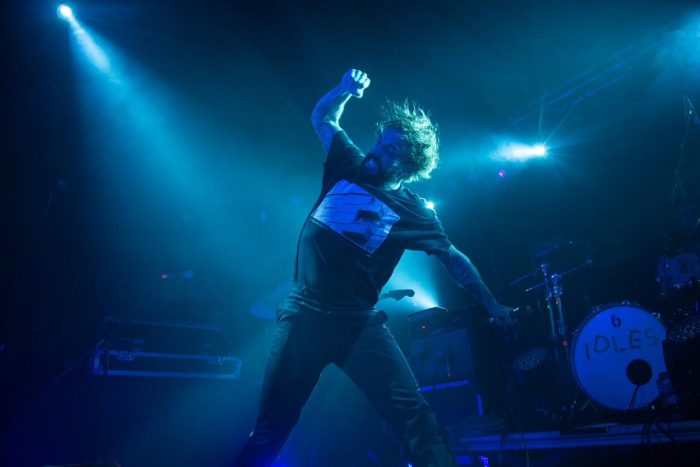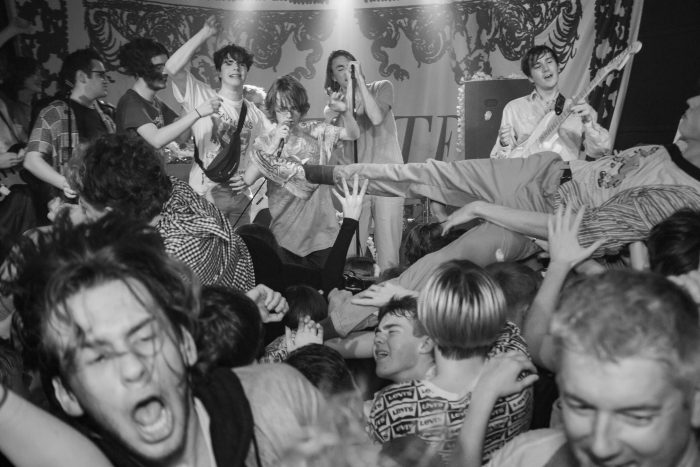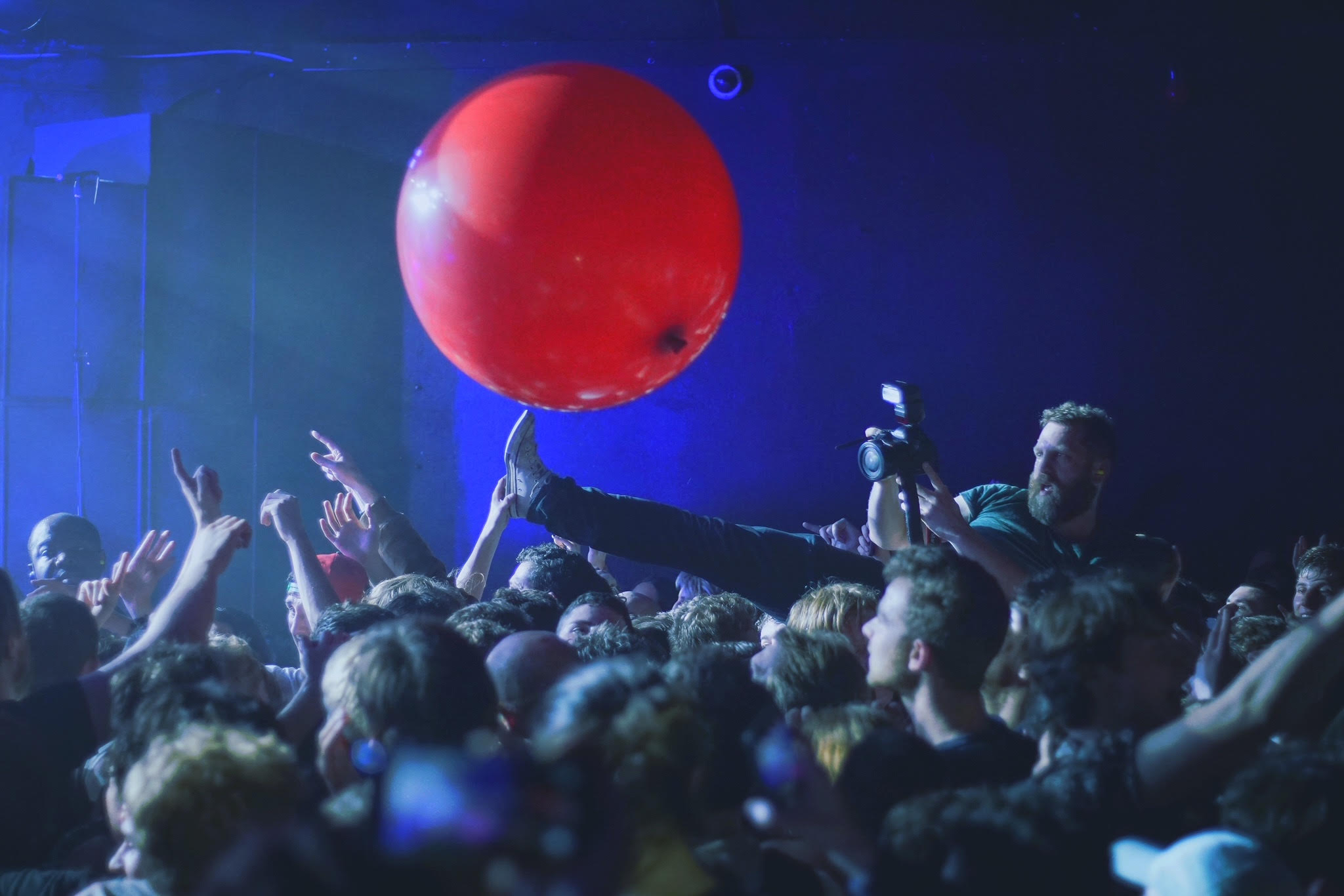Photographer Highlight | Jamie MacMillan
Image credit: Jamie MacMillan
In our final edition of Photographer Highlight we catch up with the ever talented Jamie MacMillan, a photographer that has captured moments across the UK music scene. From large scale stadium concerts through to the sweaty DIY shows.
I first started seeing Jamie’s work on Instagram a couple of years ago, particularly his striking live photography of bands such as Sports Team, IDLES, and his portrait shots of The Big Moon (to name a few). His photography manages to capture the raw energy that is felt at any live performance, particularly the claustrophobic and intimate setting of a DIY show.
Going through Jamie’s photography you can see his drive, passion, and talent. He always seems to find himself in the right area at the right time. Capturing that special moment that if you’re not looking, you’ll miss. I am a massive fan of Jamie’s work and it is my firm belief he is one of the UK’s most important music photographers.
It was an absolute honour to chat with him about his work and influences, to dig deeper into his mind and find out more. I hope that this article and the series, in general, gives people in and out of the industry a new perspective and appreciation for music photographers.
Thank you Jamie for taking the time to chat with us, how have you been?
Jamie: Good, thank you! Like everyone, I’ve been in a bit of limbo over the last year but managed to find some work away from music pretty quickly which was lucky all around.
So, how did you get into photography and at what point did you get into music photography specifically?
Jamie: I’ve always been ‘into’ it since I was a kid really, my parents always encouraged me with point-and-shoots from an early age. But I was mainly shooting landscape and Brighton city scenes before deciding to take the plunge into live music in 2016. My first proper gig had IDLES as the opening act, and that was it. Sold.
What was the draw towards music photography?
Jamie: I lived 30 miles away from anywhere that had gigs when I was growing up, so for me looking at the live images of bands like Blur in NME was the closest I got as a kid. When I got the chance to start doing it for myself, it was addictive. Being able to capture the energy both on stage and in the crowd, trying to show what it was like to be at the gig, it’s everything.

Were there any particular photographers or artists’ work that inspired you?
Jamie: You’ve got the classics, like Pennie Smith (that shot of The Clash), and a distant cousin of mine, David Corio, who did loads of black and white work with U2, Bob Marley, and the New York hip-hop scene in the ’80s, were big early influences. I’ve always been drawn to black and white, it’s more impactful and emotional I feel.
You have photographed some of the UK’s best up-and-coming artists, in particular Sports Team, how do these opportunities come about and how does it feel to have your work shared by these brilliant artists?
Jamie: It’s just about getting yourself out there. I shoot (in normal times) 2 or 3 gigs a week, and the vast majority of them are unpaid and done out of love/excitement/interest. But without putting yourself ‘out there’, then it’s hard to strike up the relationships with artists that you might want to work with. Sports Team came from me tagging along on one of their infamous bus trips to Margate on behalf of Dork Magazine, falling in love with their nonsense pretty much instantly, and eventually becoming friends with them. Seeing one of my photos on their Forum billboard was amazing, every time something like that happens it is just a tiny little validation that I might be ok at my job haha.
“Being able to capture the energy both on stage and in the crowd, trying to show what it was like to be at the gig, it’s everything“
Jamie Macmillan – Photographer
Do you have a standout moment in your music photography career so far?
Jamie: I’m going to cheat and say two. I took the cover shot for Lucy Rose’s album ’Something’s Changing’ whilst hanging out with her and her producer (who’s also now my brother-in-law, Brighton’s that kind of town). The second is this whole crazy Sports Team journey, from shooting them at the Tom Thumb Theatre in Margate to nights at The O2 in a couple of years. Mental.
You dabble in live music photography and portraits but which one do you prefer and why?
Jamie: Live all the way. If you were at the gig, I want to capture the best moments of your night. If you missed it, I want to give you massive FOMO and make sure you see them the next time. That’s why I will always get in the crowd to take photos when I can, it’s where the energy is. Portraits are cool, I enjoy doing them but I will always prefer spontaneity.

How do you prepare for a shoot?
Jamie: The amount of times I’ve forgotten my SD card, and even a battery, is unprecedented amongst professional music photographers. So probably just double-check them. I might check out what a band does in the ‘first 3 songs’ if that’s all I’ve got, but other than that I’m pretty loose on habits.
Do you feel photographers are an often overlooked and underappreciated group within the industry?
Jamie: Totally. Not by everyone obviously. But there are just so many of us, I think it’s easy to underestimate what a really good music photographer can do, and what they can add. The very best capture an entire night or tour in one image, and can change perceptions about what a band is like live.
Do you feel visual aid is important for artists during this internet age?
Jamie: Yeah totally. Visual is still everything, all our social media is still largely based on images and sharing of them. It might be cool to build an air of mystery about your act, but eventually, people are still gonna want to see photos of them!
Why should a band work with a professional photographer?
Jamie: Because they can trust them to get what they need without asking. They’re not scrabbling around looking for a half-decent photo taken on an iPhone (as good as they are these days) from someone in the crowd, or wishing that someone had managed to get all four of them in focus in the same shot. Or caught that nice moment backstage when guards were down or caught that wild crowd surfer moment. And if they are their own photographer, it becomes second nature. They’re part of the team, just as much as their sound engineer.
Lastly, what advice would you give to a band looking to book a photographer and what advice would you give to a budding music photographer?
Jamie: For bands, make sure you can trust them and make sure they do the style you want or need. And please, if you can afford it, pay them a fair rate. It’s their job.
For budding photographers, be everywhere. Shoot every gig you can. Email band managers to see if they need anything. Don’t worry if you don’t hear back or get ten rejections in a row, it happens to everyone. If you can get a photo pass, chat with the other photographers – it’s a small world and having friends in the pit is good. If you can’t get a photo pass and it’s a small gig, buy a ticket and shoot from the crowd. Shoot from the places where other photographers haven’t spotted, find a cool angle. Don’t be afraid to not get paid most of the time, most of us don’t. Chat to artists, send them the photos, tag them in it. If it’s someone whose music you love, tell them. Have fun. That’s the most important thing. Have fun.
